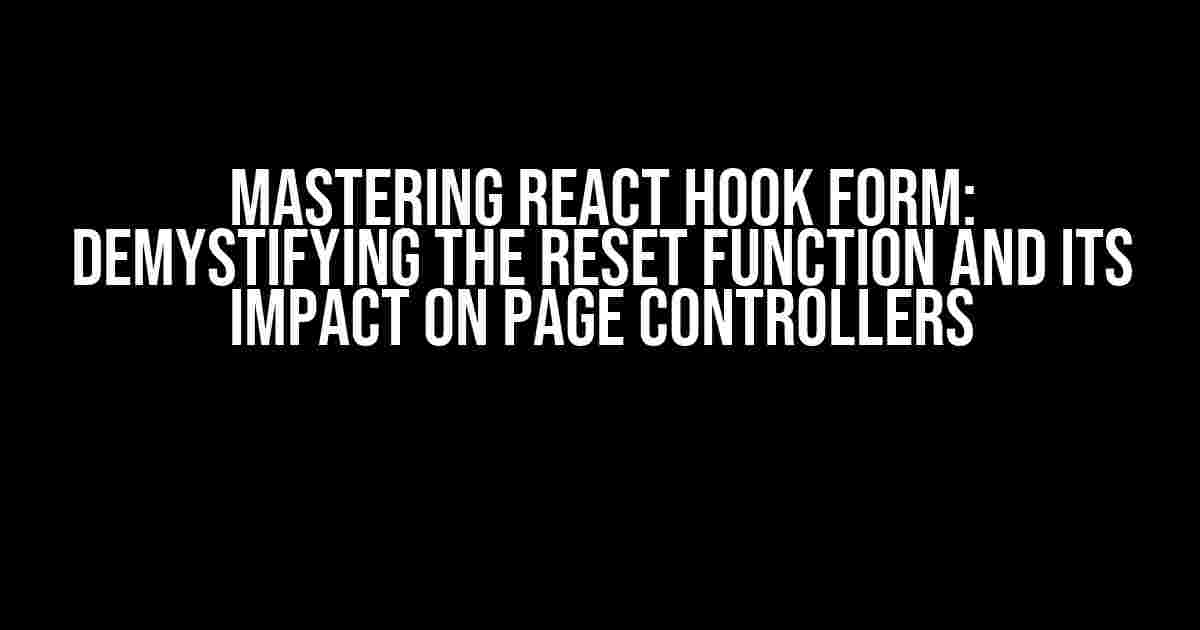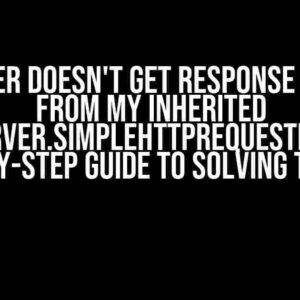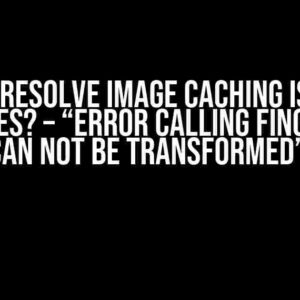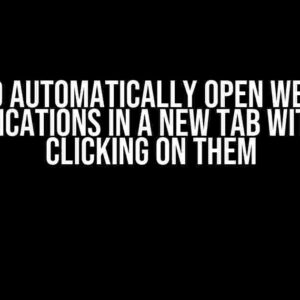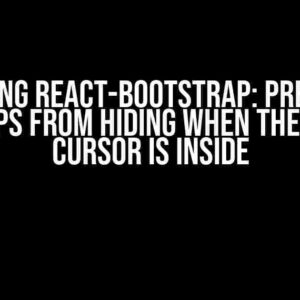Are you tired of dealing with frustrating form resets in your React application? Do you struggle to understand how the reset function in React Hook Form affects all controllers on your page? You’re not alone! In this comprehensive guide, we’ll dive deep into the world of React Hook Form and explore the reset function, its usage, and its implications on your page controllers.
What is React Hook Form?
React Hook Form is a popular library for managing forms in React applications. It provides an efficient and straightforward way to handle form state, validation, and submission. By leveraging the power of React Hooks, React Hook Form simplifies form management and reduces the complexity of your code.
The Reset Function: A Closer Look
The reset function is a crucial part of React Hook Form that allows you to reset a form to its initial state. This function is often used to clear form data after a successful submission or to revert to the default state when the user cancels the form. However, the reset function can have unintended consequences if not used correctly, leading to changes in all controllers on your page.
How the Reset Function Affects Page Controllers
When you call the reset function, React Hook Form triggers a re-render of the entire form, which can cause unexpected changes to all controllers on your page. This can result in:
- Unintended data loss or overwrite
- Inconsistent form state
- Unpredictable behavior in dependent components
To avoid these issues, it’s essential to understand how the reset function works and how to use it effectively.
Best Practices for Using the Reset Function
Follow these best practices to ensure the reset function doesn’t wreak havoc on your page controllers:
- Use the `reset` function with caution: Only call the reset function when it’s absolutely necessary, such as after a successful form submission or when the user explicitly requests to reset the form.
- Use the `shouldUnregister` option: When calling the reset function, set the `shouldUnregister` option to `true` to prevent the re-registration of controllers. This helps maintain the correct form state and prevents unintended changes.
- Keep controllers in sync with form state: Ensure that your controllers are always in sync with the form state. This can be achieved by using React Hook Form’s built-in `useWatch` hook to track changes in the form state and update your controllers accordingly.
- Avoid using `useEffect` with the reset function: Refrain from using the `useEffect` hook with the reset function, as it can lead to infinite loops and cause performance issues.
Example Code: Using the Reset Function Correctly
import { useForm } from 'react-hook-form';
const MyForm = () => {
const { register, reset, handleSubmit } = useForm();
const onSubmit = (data) => {
// Submit form data
console.log(data);
// Reset form with shouldUnregister option
reset({ shouldUnregister: true });
};
return (
<form onSubmit={handleSubmit(onSubmit)}>
<input type="text" {...register('name')} />
<input type="email" {...register('email')} />
<button type="submit">Submit</button>
</form>
);
};
Real-World Scenarios: Handling Reset Function Calls
Let’s explore some real-world scenarios where the reset function is commonly used and how to handle its implications on page controllers:
Scenario 1: Form Submission and Reset
In this scenario, you want to reset the form after a successful submission. You can use the reset function with the `shouldUnregister` option to prevent re-registration of controllers.
const onSubmit = (data) => {
// Submit form data
console.log(data);
// Reset form with shouldUnregister option
reset({ shouldUnregister: true });
};
Scenario 2: Cancelling Form Edits
When the user cancels form edits, you want to reset the form to its initial state. In this case, use the reset function without the `shouldUnregister` option to maintain the correct form state.
const onCancel = () => {
// Reset form to initial state
reset();
};
Scenario 3: Handling Dynamic Form Changes
In this scenario, you have a dynamic form that changes based on user input. When the form changes, you want to reset the affected controllers. Use React Hook Form’s `useWatch` hook to track changes in the form state and update your controllers accordingly.
const { watch } = useForm();
watch('fieldName', (newValue) => {
// Update affected controllers based on new value
console.log(newValue);
});
Conclusion
In conclusion, the reset function is a powerful tool in React Hook Form that requires careful usage to avoid unintended consequences on page controllers. By following best practices and understanding how the reset function works, you can harness its power to create seamless and efficient form experiences.
| Best Practice | Description |
|---|---|
| Use the `reset` function with caution | Only call the reset function when necessary |
| Use the `shouldUnregister` option | Prevent re-registration of controllers when resetting the form |
| Keep controllers in sync with form state | Use React Hook Form’s `useWatch` hook to track form state changes |
| Avoid using `useEffect` with the reset function | Prevent infinite loops and performance issues |
By mastering the reset function and its implications on page controllers, you’ll be well on your way to creating robust and user-friendly form experiences with React Hook Form.
Frequently Asked Question
Get the inside scoop on react-hook-form’s reset function and its impact on all controllers on your page!
What is the purpose of the reset function in react-hook-form?
The reset function in react-hook-form is used to reset the form state and values to their initial states. It’s a convenient way to clear out form data and start fresh, especially when you need to reuse the form for different purposes.
Why does calling the reset function affect all controllers on my page?
When you call the reset function, it resets the entire form state, which includes all controllers (inputs, selects, checkboxes, etc.) that are connected to the form. This means that the reset function has a ripple effect, clearing out data from all controllers, not just a single one.
Is there a way to reset a single controller instead of the entire form?
Yes! You can use the `setValue` function from react-hook-form to update a single controller’s value. For example, if you want to reset a single input field, you can use `setValue(‘inputFieldName’, ”)` to clear its value. This approach allows for more granular control over form data.
Can I prevent the reset function from affecting certain controllers?
While there isn’t a direct way to exclude specific controllers from the reset function, you can use a workaround. You can separate the controllers you want to exclude into a separate form or use a different state management approach for those controllers. This way, when you call the reset function, it won’t affect those controllers.
Are there any performance implications when calling the reset function?
In general, calling the reset function shouldn’t have significant performance implications, as it’s mainly updating the form state. However, if you have a very large form with many controllers or complex validation rules, you might notice a slight delay. To mitigate this, consider using techniques like memoization or optimizing your form structure for better performance.

